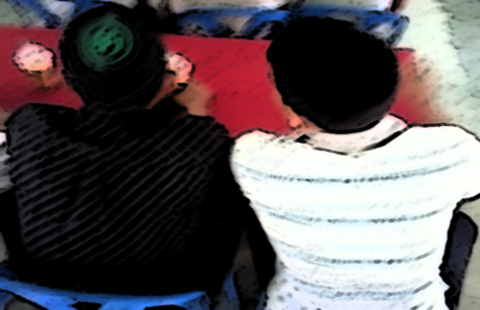Defectors have no influence over the "new breed" militants

It came as little surprise that the mass defection of 93 former and active Islamic militants to the government was viewed with suspicion by quite a few people that the defection was real or staged to give an impression that the government is making a headway in the war against insurgency.
The defectors who included a handful of important figures were shown to the media in the company of Lt-Gen Udomchai Thammasarorach, commander of the 4th army region, at the Provincial Islamic Committee’s Office in Narathiwat on September 11.
The suspicion was not unjustified given two TV broadcasts of unilateral ceasefire by the militant gangs. The first incident was on Juy 17, 2008 when the “TV Pool” network broadcasted a video clip showing three men who claimed to be leaders of the so-called "Underground Alliance of Southern Thailand" proclaiming a unilateral ceasfire taking effect on July 14. Later on, it was proven that the three men were imposters.
The second incident was on July 11, 2010 when a group which called itself the "Pattani Malayu Liberation Movement" announced a unilateral ceasefire taking effect retroactively on June 10 until July 10 of the same year in Ra-nage, Yee Ngo and Cho Airong districts of Narathiwat. The ceasefire announcement was intended to convince the government into peace talks with the militant gangs. However, the overture was rejected outright by the Abhisit government.
A senior staff member of the Isra news agency who was present at the mass defection ceremony on September 11 said that most of the defectors were wanted by the government on security-related charges with arrest warrants issued against them in accordance with the Emergency Decree and the Criminal Procedure Code. Several of them were detained for a long period of time before they were acquitted by the court.
A more interesting issue about these defectors is not whether they are real or fake militants but about whether they still wield any influence among the hardcore militants who have been responsible for most of the violent incidents in the three southernmost provinces.
It appears that most of these defectors were active in the restive region during 2002-2007. They are considered as the "old guards" who have wanted to give up their armed struggle in order to rejoin their famiies. In other words, they do not have any influence over the extremist gangs which have been terrorizing people in the region.
However, their defection was welcomed and viewed as a good sign because their defection might encourage the other militants to turn themselves in to the authorities.
There is nevertheless one big problem which needs to be addressed by the government to respond to the defectors’ peace overture. The defectors have demanded that the arrest warrants issued against them be revoked.
One of the options to address this problem is to lift the Emergency Decree which will automatically invalidate all the arrest warrants issued by virtue of the decree with the exception of the warrants issued under the Criminal Procedure Code which remain effective.
Meanwhile, the forward command of the Internal Security Operations Command said that August was the most violent month since last November with 86 violent incidents reported resulting to 47 deaths and 70 injured.
The death toll is broken down into the followings: one soldier, two policemen, one paramilitary ranger, three defence volunteers, four community leaders, four suspected militants and 32 innocent civilians.
The casualties since January 2004 were 4,845 deaths and 8,765 injured. The dead victims included 2,036 Buddhists and 2,678 Muslims.
The 86 violent incidents were broken down into the followings: 52 shooting incidents, 21 bombings, four arson attacks and nine incidents of public disturbance. Of these, 21 incidents were not security-related.
Narathivat topped the most violent province with 35 violent incidents being reported followed by Pattani’s 32 incidents, 17 incidents in Yala and two incidents in Thepa district of Songkhla.
But on district-level, Sai Buri district of Pattani topped the list of most violent district with 10 incidents followed by eight incidents each in Muang district of Narathiwat and Raman district of Yala. Ra-ngae and Si Sakhon districts of Narathiwat reported six incidents each.
Eleven districts reported not a single violent incident in August. They included Kabang, Tharn To and Betong districts of Yala, Mae Larn, Kapor and Thung Yang Daeng districts of Pattani, Rueso and Wangdistricts of Narathiwat, Chana, Saba Yoi and Na Thawee districts of Songkhla.
